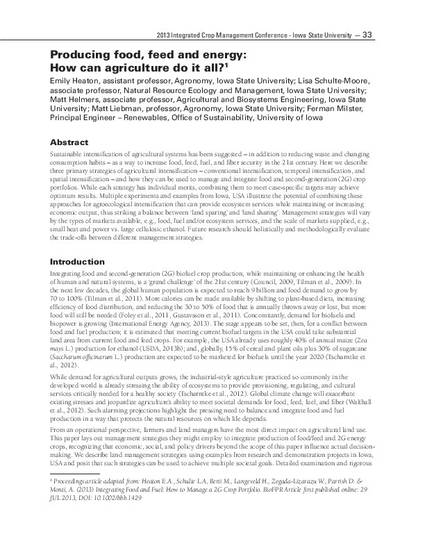
Sustainable intensification of agricultural systems has been suggested—in addition to reducing waste and changing consumption habits—as a way to increase food, feed, fuel, and fiber security in the 21st century. Here we describe three primary strategies of agricultural intensification—conventional intensification, temporal intensification, and spatial intensification—and how they can be used to manage and integrate food and second-generation (2G) crop portfolios. While each strategy has individual merits, combining them to meet case-specific targets may achieve optimum results. Multiple experiments and examples from Iowa, USA illustrate the potential of combining these approaches for agroecological intensification that can provide ecosystem services while maintaining or increasing economic output, thus striking a balance between ‘land sparing’ and ‘land sharing’. Management strategies will vary by the types of markets available, e.g., food, fuel and/or ecosystem services, and the scale of markets supplied, e.g., small heat and power vs. large cellulosic ethanol. Future research should holistically and methodologically evaluate the trade-offs between different management strategies.
Available at: http://works.bepress.com/matthew_helmers/181/
